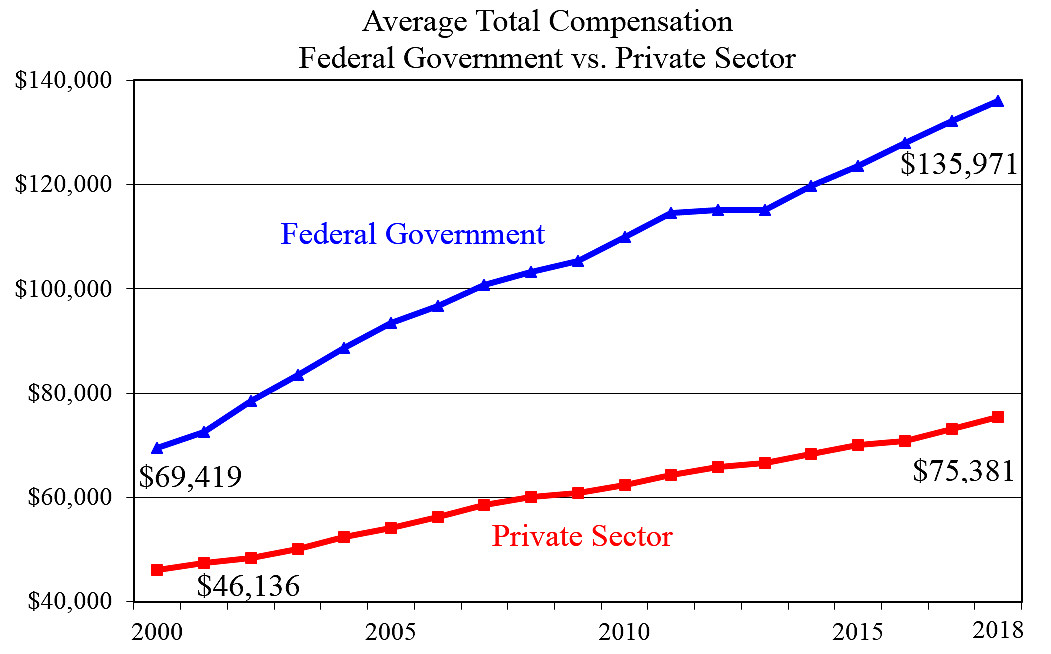The Bureau of Economic Analysis has released data on worker pay for calendar 2018. The data show that compensation for U.S. private-sector workers grew faster than for federal civilian government workers last year.
Average wages for private workers increased 3.2 percent in 2018, outpacing the increase for federal workers of 2.7 percent. Total compensation (wages plus benefits) for private workers increased 3.2 percent in 2018, topping the increase for federal workers of 2.9 percent
That is good news for private-sector workers, but their pay still falls far short of pay for federal workers, on average. Federal workers had average wages of $94,463 in 2018, or 49 percent more than the private average of $63,306. Federal workers had average total compensation of $135,971 in 2018, or 80 percent more than the private average of $75,381.
Experts agree that federal government workers have a large advantage in their gold-plated benefits packages. Federal pension and health benefits are excessively generous.
The chart shows the growth in average federal and private-sector compensation since 2000. Federal compensation grew much faster than private compensation until a brief federal wage freeze under President Obama. But since the freeze ended, federal compensation has resumed its upward trajectory. Over the past five years, federal compensation has grown 18 percent compared to growth of 13 percent in the private sector.
This study examines federal compensation issues in detail, and the underlying BEA data are in section 6 tables here.

